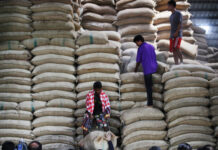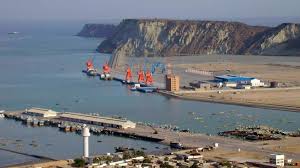Owing to the sliding exports and lower inflows of direct investment and remittances, Pakistan’s current account deficit further widened to a (negative) $4.716 billion in July-January in current fiscal year, according to data released by the State Bank of Pakistan (SBP) here on Friday.
Despite all low economic indicators, the SBP figures show that the country’s Gross Domestic Product (GDP) has swelled up to $186.553 billion, up by 12.43 per cent in July-Jan 2016-17 as compared to $165.917 billion in same period of the last fiscal year. According to the SBP’s projection, full year GDP would increase by 5 – 5.50 per cent in the current fiscal year.
The deficit of the country widens by 90.23 per cent to (negative) $4.716 billion in the last seven months of this fiscal year while it stood at (negative) $2.237 billion in the same period last year.
An analyst believed, “full year C/A deficit of the country might be above (Negative) $6 billion in the current fiscal year if our remittances, FDIs and exports receipts would not increase in the remaining five months.”
He said that the main reason behind this rising deficit trend is the escalating imports bill of the country and it may further go up as it (import bill) is linked with international oil prices which are likely to shoot up in 2017.
“Despite little improvement in current exports in Oct-Jan 2016-17, the balance of payments account of the country is not much better while the remittances are also under pressure for last seven months,” the analyst said. The import bill of the country has gone up by 140 per cent during the period, he added.
In the remaining five months, according to him, the exports of the country may slightly improve after an announcement of Rs 180 billion textile package.
The central bank is facing payment pressure by international donor agencies including the International Monetary Fund (IMF) as the current account is still hovering in deficit, he added.
According to a newspaper, the SBP is reported to have recently been pushing some banks to raise money from the international markets for settling large import payments of its customers. As opposed to the normal procedure where banks meet their payment obligations in foreign currency from the local inter-bank market, banks are allegedly being asked to either tap the international bond market or borrow from other foreign banks in order to preserve the already dwindling foreign exchange reserves of the country.
Forex reserves of the country hit almost 8 months low to $21.824 billion on last Thursday as the State Bank made payments of $224 million on account of government of Pakistan’s debt and other payments this week. The SBP has maintained the exchange rate of dollar at Rs 104.80-85.
The exports have declined by 3.21 per cent to $11.685 billion in July-Jan 2016-17, while imports touched an all-time high of $29.113 billion or 13.65 per cent during the period. The trade deficit further swelled up to $17.428 billion, up by 28.68 per cent compared to $13.544 billion in the same period last year. It surged by 75.17 per cent in January 2017 on MOM basis, while 28.68 per cent up on YOY basis.
Overseas Pakistani workers remitted $10.947 billion in Jul-Jan of 2016-17, down by $208 million or 1.8 per cent compared to $11.155 billion received during the same period in the preceding year.
During January 2017, the inflow of workers’ remittances amounted to $1.488 billion, which is 6.0 per cent lower than December 2016 and 1.45 per cent higher than January 2016.
























